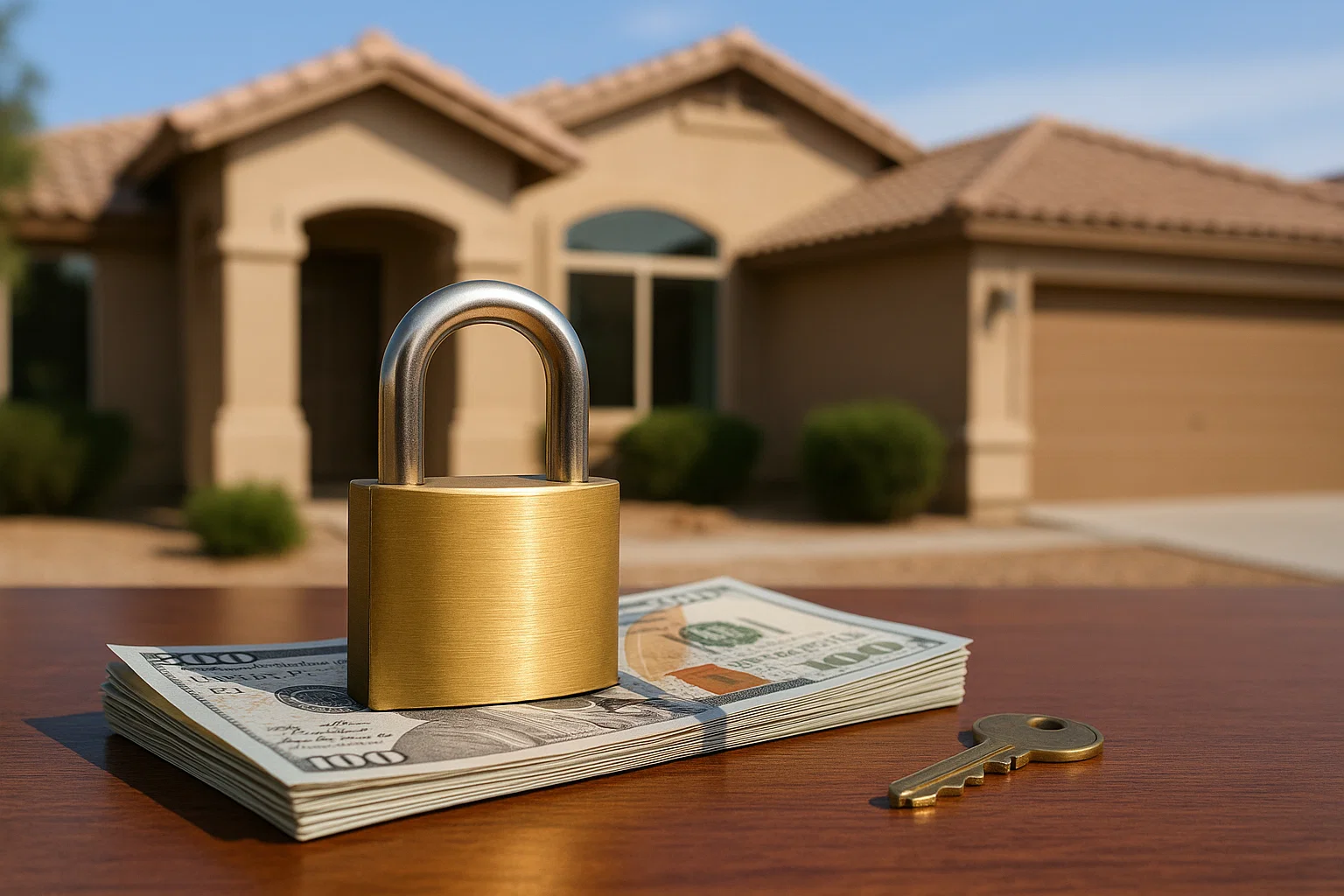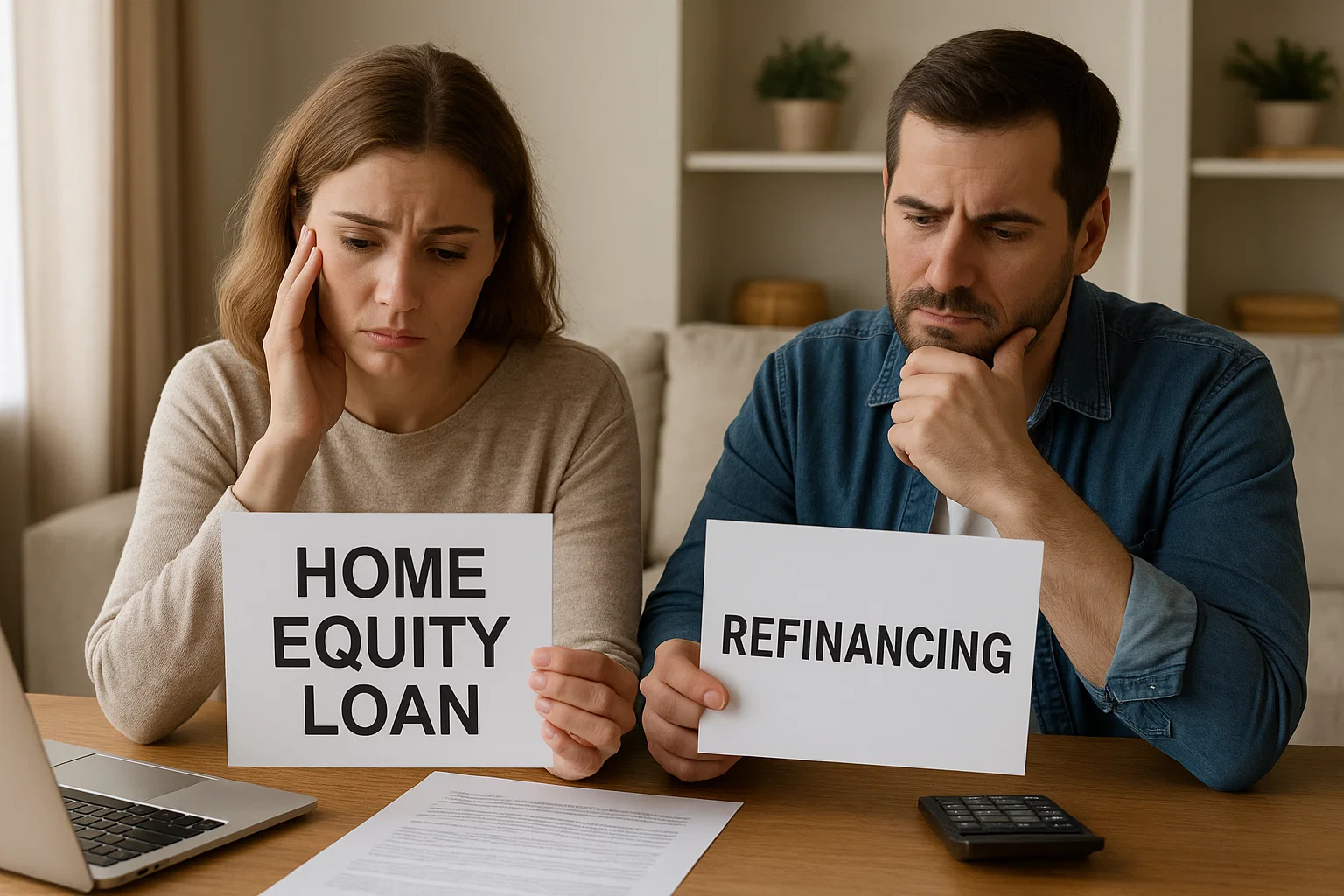Unlock Savings: Explore Today's Mortgage Refinance Rates in Utah
November 19, 2025
Explore today's mortgage refinance rates in Utah. Learn about current rates, market trends, loan options, and how to secure the best deal.

Thinking about refinancing your mortgage in Utah? It's a big decision, and rates can change pretty quickly. We've seen rates go up and down, and knowing where things stand now is key. This article breaks down what you need to know about mortgage refinance rates in Utah, helping you figure out if now is the right time for you to make a move. We'll cover the current rates, what affects them, and how to get the best deal possible.
Key Takeaways
- Current 30-year fixed mortgage refinance rates in Utah are around 6.54%, with 15-year fixed rates near 5.94%.
- Refinancing might be a good idea if you secured a mortgage when rates were higher, like around 8%.
- Utah's housing market shows a median home sale price of $587,100, with homes taking about 55 days to sell.
- Options like conventional, FHA, VA, and USDA loans are available for Utah homeowners, each with different requirements.
- To get the best mortgage refinance rates Utah homeowners should focus on improving their credit score, making a larger down payment, and keeping their debt-to-income ratio low.
Understanding Current Mortgage Refinance Rates in Utah

So, you're thinking about refinancing your mortgage here in Utah. That's a big step, and it's smart to get a handle on what the rates are doing right now. It's not quite like predicting the weather, but there are definitely patterns and factors to watch.
Current Interest Rates for Utah Mortgages
As of mid-November 2025, things look a bit different than they did a few years back. For a 30-year fixed mortgage, you're generally seeing rates around 6.25 percent, and for a 15-year fixed, it's closer to 6.00 percent. These numbers are a significant jump from the super low rates we saw during the pandemic. While rates have eased a bit from their highest points in 2023, many folks in the know expect them to hang out in the 6 percent range for a good chunk of 2025 and even into 2026. It's a tricky game to predict exactly, though.
Factors Influencing Utah Refinance Rates
What makes these rates tick? A few things, really. The Federal Reserve's actions play a big role, as do broader economic conditions like inflation and the general health of the economy. If you bought your home when rates were higher, say around 8 percent, refinancing now could offer some real savings. However, if you locked in a rate below 4 percent a while back, doing it again probably won't save you much money in the short term.
Refinancing can be a great way to lower your monthly payments or shorten your loan term, but it's not always the right move for everyone. It's important to look at your specific financial situation and compare the costs of refinancing against the potential savings.
When Refinancing Makes Financial Sense
So, when is it actually a good idea to refinance?
- Lowering Your Monthly Payment: If current rates are significantly lower than your existing rate, you could reduce how much you pay each month. This can free up cash for other needs.
- Shortening Your Loan Term: You might want to keep your monthly payment the same but pay off your mortgage faster. Refinancing into a shorter term, like a 15-year loan, can save you a lot on interest over time.
- Tapping into Home Equity: If your home's value has gone up and you have a good amount of equity, a cash-out refinance lets you borrow against that equity. This can be useful for large expenses like home improvements, education costs, or consolidating debt, especially if current rates make it cheaper than other loan options.
- Switching Loan Types: Maybe you want to get rid of private mortgage insurance (PMI) by refinancing from an FHA loan to a conventional loan once you have enough equity.
Navigating Utah's Housing Market for Refinancing
When you're thinking about refinancing your mortgage in Utah, it's super helpful to get a feel for what's happening with home prices and how quickly houses are selling. The market here has been pretty active, but things are starting to shift a bit. Understanding these trends can help you decide if now is the right time to refinance.
Utah Home Value Trends
Utah's housing market has seen some serious growth over the past year, with median home prices climbing. While this is good news if you own a home, it also means that buying a new place can be tough. The median home sale price in Utah is quite a bit higher than the national average. This steady increase in value is a key factor when considering how much equity you have available for a refinance.
Days on Market and Price Adjustments
Lately, houses in Utah are sticking around on the market a little longer than before. You're also seeing a smaller percentage of homes selling for more than their asking price. On the flip side, more homes are having their prices reduced. This suggests the market is cooling down a bit, which could mean more room for negotiation if you're looking to buy, and potentially more stable refinance rates.
Here's a quick look at some recent numbers:
Homeownership Rates in Utah
The homeownership rate in Utah has been pretty solid. As of the first quarter of 2025, it was around 68.1%. This indicates a healthy level of people owning their homes, which is generally a good sign for the overall stability of the housing market. A higher homeownership rate can sometimes correlate with more stable property values, which is something to keep in mind when you're looking at your Utah mortgage rates.
When you're thinking about refinancing, it's not just about the interest rates. You've got to consider what's happening in the local real estate scene. Things like how much homes are worth and how fast they're selling can really impact your options and the potential savings you might see from a refinance.
Exploring Different Mortgage Options in Utah
When you're thinking about refinancing your mortgage in Utah, it's not a one-size-fits-all situation. There are several types of home loans out there, and each has its own set of rules and benefits. Understanding these can help you figure out which one might be the best fit for your current financial picture and future goals. It's like picking the right tool for a job – you wouldn't use a hammer to screw in a bolt, right?
Conventional Mortgages in Utah
These are probably the most common type of mortgage. To get one, you generally need a decent credit score, usually at least 620, and your debt-to-income ratio shouldn't be too high, typically under 45 percent. If you put down less than 20 percent, you'll likely have to pay for private mortgage insurance, or PMI. It's an extra cost, but it protects the lender if you can't make your payments.
FHA Loans for Utah Homeowners
If your credit score isn't quite where you'd like it for a conventional loan, an FHA loan could be a good alternative. These loans are insured by the Federal Housing Administration. You can often get approved with a credit score as low as 580, and you might only need a 3.5 percent down payment. They're designed to help more people become homeowners.
VA Loans for Utah Veterans
For those who have served in the military, VA loans are a fantastic benefit. These mortgages are guaranteed by the Department of Veterans Affairs. A big perk is that you usually don't need a down payment at all, and you typically don't have to worry about mortgage insurance. There is a VA funding fee, though, which is a one-time charge based on the loan amount, but it's often less than paying PMI over the life of the loan.
USDA Loans for Rural Utah Properties
If you're looking to buy a home in a rural area of Utah, a USDA loan might be an option. These are backed by the U.S. Department of Agriculture. Like VA loans, they often don't require a down payment. However, you have to buy in a USDA-designated rural area, and there are income limits to consider. It's a great way to make homeownership possible in less populated parts of the state.
Choosing the right mortgage type is a big decision. It affects your monthly payments, the total interest you'll pay, and even your ability to get approved in the first place. Take some time to look at the requirements for each and see which one aligns best with your financial situation.
Securing the Best Mortgage Refinance Rate in Utah
So, you're thinking about refinancing your mortgage here in Utah. That's a big step, and getting the best possible rate can make a real difference in your monthly payments and how much you pay over the life of the loan. It’s not just about picking the first offer you see; it takes a little bit of homework.
Improving Your Credit Score for Refinancing
Your credit score is a pretty big deal when it comes to getting a good refinance rate. Lenders see it as a sign of how reliably you pay back borrowed money. If your score isn't where you'd like it to be, there are a few things you can do to give it a boost before you apply.
- Pay bills on time, every time. This sounds obvious, but it's the most important factor. Late payments can really drag your score down.
- Reduce credit card balances. Try to pay down what you owe on your credit cards. Keeping your credit utilization low shows lenders you're not overextended.
- Check for errors. Sometimes, there are mistakes on your credit report. Dispute any inaccuracies you find, as correcting them could help your score.
A higher credit score generally means lenders see you as less of a risk, which often translates into a lower interest rate for your refinance.
The Impact of Down Payments on Rates
When you refinance, especially if you're looking at a cash-out refinance, the amount you put down (or the amount of equity you have) plays a role. Generally, the more equity you have in your home – meaning the less you owe compared to what your home is worth – the better your rate might be. If you're refinancing a purchase loan and putting down a larger amount, that can also signal to lenders that you're a more stable borrower.
Managing Your Debt-to-Income Ratio
Another key number lenders look at is your debt-to-income ratio, or DTI. This is basically a comparison of how much you owe each month in debt payments versus how much you earn before taxes. A lower DTI suggests you have more room in your budget to handle a mortgage payment, making you a more attractive borrower.
Here’s a quick look at what lenders typically prefer:
- Lower is Better: Aim for a DTI of 43% or less. Some lenders might go a bit higher, but a lower number is always more favorable.
- What Counts: Your DTI includes things like credit card payments, student loans, car loans, and, of course, your potential new mortgage payment.
- How to Improve It: The best ways to lower your DTI are to pay down debt or increase your income. Since increasing income might not be an option right away, focusing on debt reduction is often the most practical approach before refinancing.
Leveraging Equity with a Cash-Out Refinance in Utah

So, you've been paying down your mortgage in Utah, and your home's value has gone up. That's great news! It means you've built up some equity, which is basically the difference between what your home is worth and what you owe on the mortgage. A cash-out refinance lets you tap into that equity. You get a new mortgage for a larger amount than you currently owe, and the difference is paid to you in cash. It's like getting a loan against your home's value.
Utah's Equity Rich Homes
Utah has seen a good amount of home value appreciation over the years. This means a lot of homeowners in the Beehive State have a decent chunk of equity built up. In fact, recent data shows a significant percentage of homes in Utah are considered "equity rich," meaning the homeowner owes 50% or less of the home's current market value. This situation opens the door for many to consider a cash-out refinance.
Cash-Out Refinance Benefits
Why would someone want to do a cash-out refinance? Well, there are a few common reasons:
- Home Improvements: Maybe you want to finally remodel that kitchen or add an extension. Using cash-out funds can be a way to finance these projects.
- Debt Consolidation: If you have high-interest debt like credit cards or personal loans, you might consider using the cash to pay them off. The idea is that your mortgage interest rate will likely be lower than your credit card rates.
- Major Expenses: Life happens. You might need funds for education, medical bills, or other significant life events.
- Investment Opportunities: Some people use this cash to invest in other ventures, though this carries its own risks.
It's important to remember that a cash-out refinance replaces your current mortgage with a new, larger one. This means your loan balance will increase, and you'll be paying interest on the cash you take out over the life of the new loan. Also, the interest rate on a cash-out refinance is typically a bit higher than on a standard rate-and-term refinance because lenders see it as a slightly riskier transaction.
Comparing Borrowing Options
Before you jump into a cash-out refinance, it's smart to look at other ways to get the money you need. Personal loans, home equity loans, and home equity lines of credit (HELOCs) are other options. Each has its own pros and cons. A cash-out refinance rolls everything into one mortgage payment, which can be simpler. However, a separate home equity loan or HELOC might offer a different interest rate or repayment structure that could work better for your specific situation. It's worth shopping around and comparing the rates, fees, and terms for all these options to see what makes the most sense for your financial goals in Utah.
First-Time Homebuyer Programs and Refinancing in Utah
Buying your first home in Utah can feel like a big hurdle, but there are programs designed to help make it happen. And sometimes, even after you've bought a place, you might find yourself looking at refinancing options that could have been part of a first-time buyer's package. It's worth knowing what's out there.
Utah Housing Corporation Programs
The Utah Housing Corporation is a big player when it comes to helping people buy homes in the state. They have a few different programs, and they're not just for people buying their very first home. Some programs can help repeat buyers too, which is interesting. A key thing they offer is help with your down payment, no matter which of their loan programs you end up using.
FirstHome Loan Details
This is one of the main programs aimed at first-time buyers. The FirstHome Loan offers a 30-year fixed-rate mortgage. To get it, you'll need a credit score that meets their requirements, and there are limits on how much you can earn and how much the home can cost. It's designed to give you a predictable monthly payment, which is nice when you're just starting out.
Down Payment and Closing Cost Assistance
This is where things can get really helpful. The Utah Housing Corporation provides a second mortgage loan specifically to help cover your down payment and closing costs. This assistance can be a significant chunk of the money you need upfront. For example, it can cover up to 6% of your first mortgage amount, though there's a cap on how much you can receive. This doesn't need to be paid back unless you sell the home, which is a pretty sweet deal.
Here's a quick look at what this assistance can cover:
- Down payment funds
- Closing costs
- Rate buydown options (on some programs)
It's important to remember that these programs often have specific income limits and purchase price restrictions. Always check the latest details with the Utah Housing Corporation or a lender familiar with their programs to see if you qualify.
The Process of Refinancing Your Utah Mortgage
So, you're thinking about refinancing your mortgage here in Utah. It sounds like a big step, and honestly, it can be. But if you do it right, it could save you a good chunk of change over time. It's not just about picking a random lender; there's a bit of a process involved to make sure you're getting the best deal possible for your situation.
Comparing Refinance Offers
This is where you really need to do your homework. Don't just go with the first company that calls you or the one you've heard of. You'll want to reach out to several different lenders – think at least three, maybe even four or five if you have the time. Ask them for a Loan Estimate. This document lays out all the important details: the interest rate, the Annual Percentage Rate (APR), closing costs, and any other fees. Comparing these side-by-side is the best way to see who's really offering you the most bang for your buck. Look beyond just the interest rate; the APR gives you a more complete picture of the total cost of the loan.
Getting Preapproved for a Mortgage
Before you even start seriously comparing offers, it's a smart move to get preapproved. This means a lender has looked at your financial information – your income, your credit, your debts – and has given you a conditional commitment to lend you a certain amount of money. It's not a final approval, but it's pretty close. Getting preapproved shows you what kind of rate you're likely to qualify for based on your specific financial profile. It also helps you understand your borrowing power, so you're not looking at homes or refinance options that are out of reach. Plus, when you're ready to lock in a rate, having that preapproval can speed things up.
Evaluating Refinance Costs
Refinancing isn't free. There are costs involved, and you need to figure out if the savings you expect from the new loan will actually outweigh these expenses. These costs can include things like appraisal fees, title insurance, recording fees, and lender origination fees. A good rule of thumb is to calculate your break-even point. This is the point at which the money you save each month on your mortgage payment equals the total cost of refinancing. If you plan to stay in your home for longer than your break-even period, refinancing is likely a good financial move. If you think you might move in a year or two, those upfront costs might eat up any potential savings.
Here's a quick look at some common refinance costs:
- Appraisal Fee: To determine the current market value of your home.
- Title Insurance: Protects the lender (and you) against any claims on the property's title.
- Origination Fee: Charged by the lender for processing the loan.
- Recording Fees: Paid to local government to record the new mortgage.
- Credit Report Fee: To pull your credit history.
Remember, the goal is to lower your monthly payment or change your loan term in a way that benefits you long-term. Don't get so caught up in the excitement of a lower rate that you forget to factor in all the associated expenses.
Should You Refinance Your Utah Mortgage Now?
Figuring out if refinancing makes sense for your mortgage in Utah can feel tricky. Rates have changed a lot, and predicting them is tough. If you got your mortgage when rates were much higher, now might be a good time to look into refinancing. Even if you're not ready to refinance, it's smart to get your finances in order. Focus on improving your credit score and paying down debt. This way, you'll be in a better spot to take advantage of good rates when they appear. Shopping around for different lenders doesn't cost anything, so it's always a good idea to see what offers are out there.
Frequently Asked Questions
What are the current mortgage refinance rates in Utah?
As of November 13, 2025, the average rate for a 30-year fixed mortgage refinance in Utah is around 6.54%, and for a 15-year fixed mortgage, it's about 5.94%. Keep in mind that these rates can change daily and depend on many factors specific to you.
When should I consider refinancing my mortgage in Utah?
It's often a good idea to refinance if you can get a lower interest rate than you currently have, especially if the difference is a full percentage point or more. If you got your mortgage when rates were high, refinancing now could save you money over time. However, if your current rate is already very low, refinancing might not be beneficial.
What factors affect my mortgage refinance rate in Utah?
Several things influence your refinance rate. These include your credit score, how much you owe compared to your home's value (loan-to-value ratio), your income, and your debt-to-income ratio. Economic conditions like inflation also play a role.
Can I get money out of my home by refinancing in Utah?
Yes, you can. This is called a cash-out refinance. It allows you to borrow more than you owe on your current mortgage and take the difference in cash. This can be useful for large expenses, but it's important to compare it to other loan options.
Are there special programs for first-time homebuyers looking to refinance in Utah?
While the Utah Housing Corporation offers programs primarily for purchasing a first home, these programs can sometimes be used for refinancing, especially if you're looking to improve your loan terms. It's best to check the specific details of programs like FirstHome or the First-Time Homebuyer Assistance Program to see if they apply to refinances.
What are the steps involved in refinancing my Utah mortgage?
The process generally involves comparing offers from different lenders, getting pre-approved to understand your specific loan terms and rate, and then evaluating all the costs associated with the refinance. It's wise to gather all necessary documents and check your credit score beforehand.













Get in touch with a loan officer
Our dedicated loan officers are here to guide you through every step of the home buying process, ensuring you find the perfect mortgage solution tailored to your needs.
Options
Exercising Options
Selling
Quarterly estimates
Loans
New home

Stay always updated on insightful articles and guides.
Every Monday, you'll get an article or a guide that will help you be more present, focused and productive in your work and personal life.









.png)
.png)
.png)
.png)
.png)
.png)
.png)
.png)
.png)
.png)
.png)
.png)
.png)
.png)
.png)
.png)
.png)
.png)